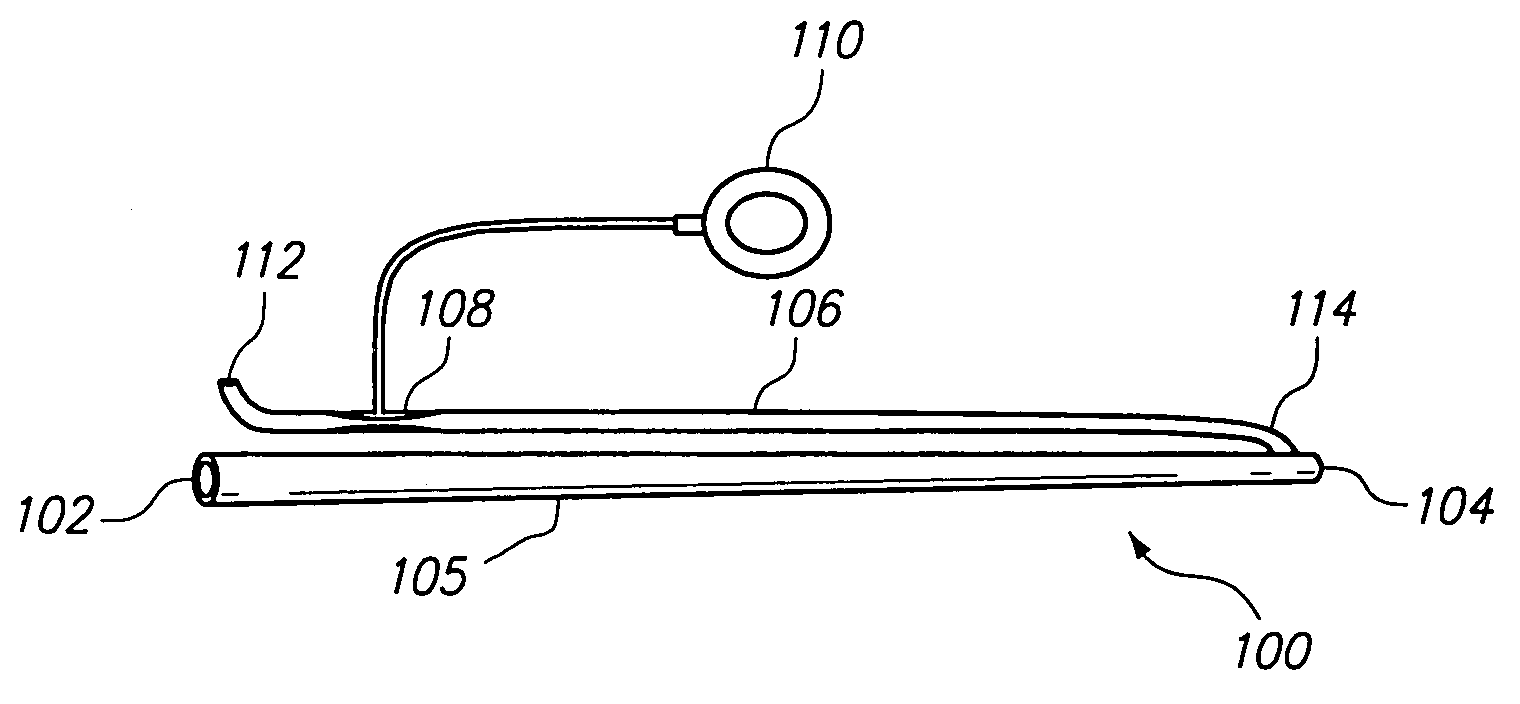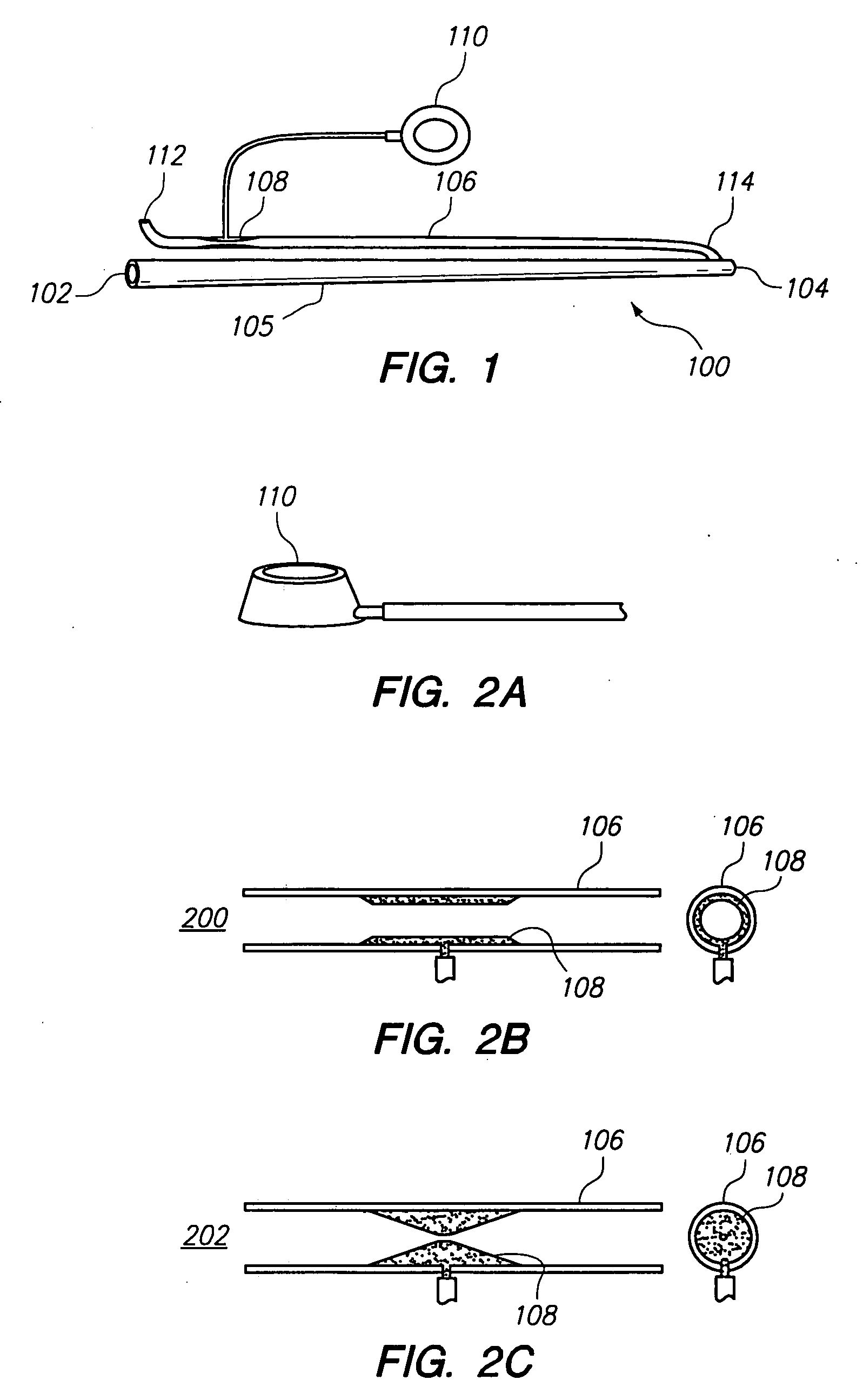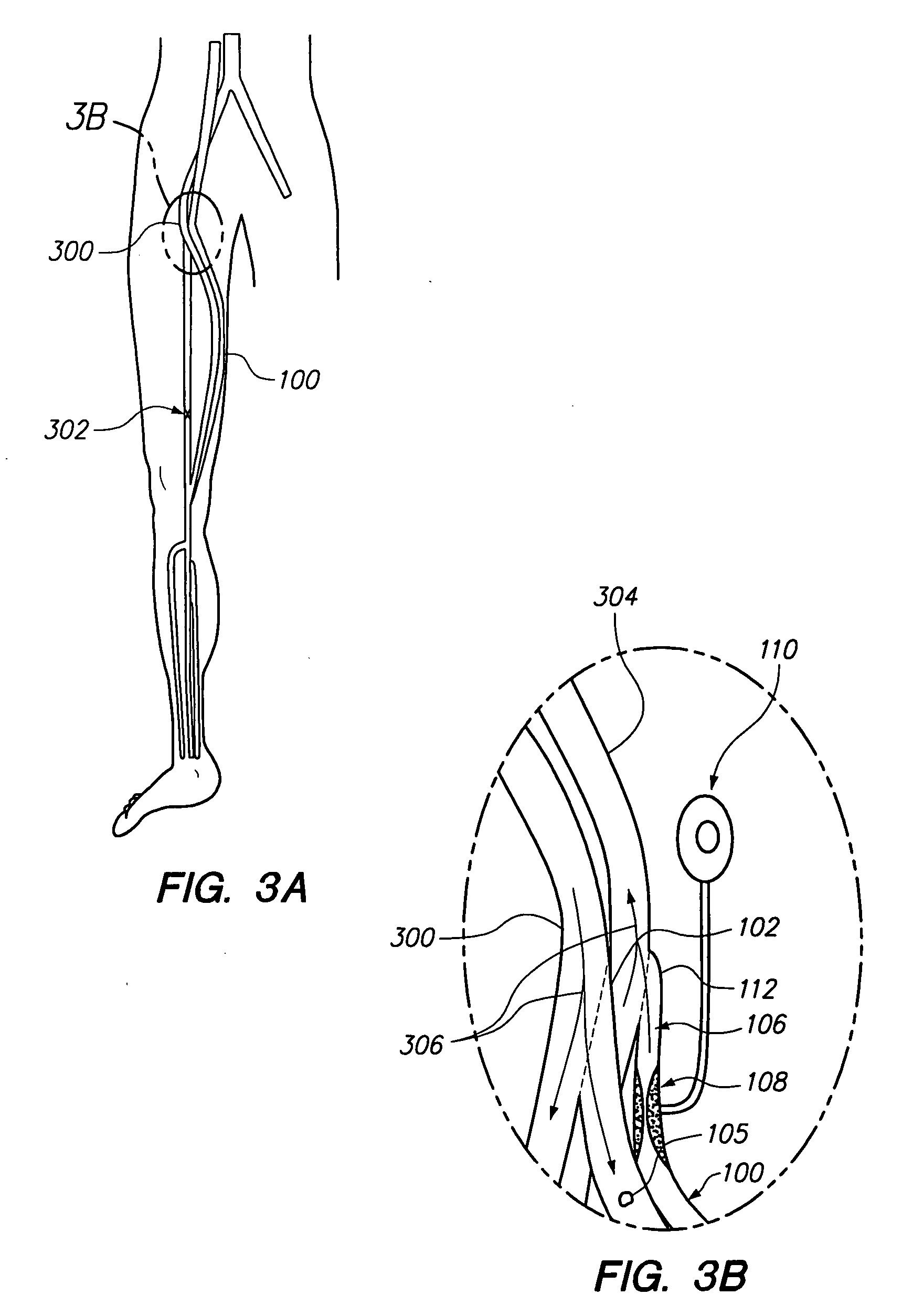Bypass vascular graft
a technology of bypass vascular graft and vascular bypass, which is applied in the field of vascular bypass graft, can solve problems such as graft failure, and achieve the effect of improving blood flow and preventing clotting
- Summary
- Abstract
- Description
- Claims
- Application Information
AI Technical Summary
Benefits of technology
Problems solved by technology
Method used
Image
Examples
Embodiment Construction
[0036]In the following description, numerous specific details are set forth in order to provide a more thorough description of the present invention. It will be apparent, however, to one skilled in the art, that the present invention may be practiced without these specific details. In other instances, well-known features have not been described in detail so as not to obscure the invention.
[0037]The primary reason for the formation of blood clots in a bypass graft is that the blood flow through the graft is of such low velocity that blood clotting mechanisms are triggered. Regions of low velocity blood flow are common in the body's smaller vessels such as veins and capillaries. Low velocity regions are also found in the transitions between larger vessels, such as arteries, to smaller ones, such as veins or capillaries because the reduction in size reduces flow capacity and thus blood flow velocity is also reduced. Thus, if a bypass graft is attached to a small vessel at its outflow e...
PUM
 Login to View More
Login to View More Abstract
Description
Claims
Application Information
 Login to View More
Login to View More - R&D
- Intellectual Property
- Life Sciences
- Materials
- Tech Scout
- Unparalleled Data Quality
- Higher Quality Content
- 60% Fewer Hallucinations
Browse by: Latest US Patents, China's latest patents, Technical Efficacy Thesaurus, Application Domain, Technology Topic, Popular Technical Reports.
© 2025 PatSnap. All rights reserved.Legal|Privacy policy|Modern Slavery Act Transparency Statement|Sitemap|About US| Contact US: help@patsnap.com



